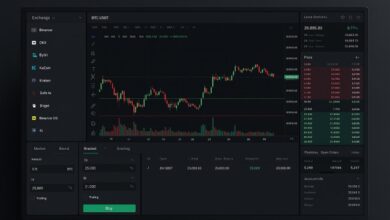Combining Multiple Crypto Tax Software Methods: A Comprehensive Guide to Efficient Crypto Tax Management

Cryptocurrency has become an integral part of the modern financial ecosystem, with millions of investors and traders actively buying, selling, and holding digital assets. As crypto adoption increases, so do the complexities associated with managing and reporting cryptocurrency taxes. With multiple exchanges, wallets, and trading platforms at play, tracking every transaction and ensuring accurate tax filing can be daunting. To address this challenge, many investors turn to crypto tax software. But in some cases, no single platform offers everything you need, prompting users to consider combining multiple crypto tax software methods.
In this article, we will delve into the strategies and methods behind combining multiple crypto tax software to ensure compliance, optimize tax savings, and streamline crypto tax reporting. We’ll also cover best practices for integrating these tools together effectively to meet the needs of even the most sophisticated crypto users.
Why Crypto Tax Software is Essential
As the cryptocurrency market matures, regulatory bodies across the globe, from the IRS in the US to HMRC in the UK, are ramping up enforcement on crypto tax compliance. Whether you are a casual investor or a high-frequency trader, reporting your capital gains, losses, staking rewards, and other income from cryptocurrencies is a legal requirement in many jurisdictions.
Crypto tax software simplifies this process by automating data imports, calculating profits and losses, and generating tax reports that comply with specific regulations in your country. These tools take the headache out of crypto tax management by tracking thousands of transactions across multiple exchanges and wallets in real time. However, many users find that one platform alone may not cover all their requirements—leading to the need for combining multiple crypto tax software methods.
Benefits of Combining Crypto Tax Software
There are several reasons why crypto investors might opt to use multiple tax software platforms:
- Coverage of Various Exchanges and Wallets: No single crypto tax software may support all the exchanges and wallets you use. Combining platforms allows you to cover gaps.
- Specific Features: Some tools may be better suited for handling decentralized finance (DeFi) transactions, staking, or margin trading, while others excel in basic capital gains calculations.
- Backup and Cross-Verification: By combining tools, you can cross-check your data to ensure accuracy and have a backup in case one software misses some transactions or calculates taxes incorrectly.
- Different Cost Methods: Different software may use different accounting methods (e.g., FIFO, LIFO, HIFO). Combining them allows you to experiment and choose the method that minimizes your tax liability.
Combining Multiple Crypto Tax Software Methods: Step-by-Step Guide
Step 1: Identify Your Requirements
The first step in combining crypto tax software is understanding your specific tax needs. Ask yourself the following questions:
- Which exchanges and wallets do you use?
- Do you need support for decentralized finance (DeFi) activities like staking or yield farming?
- How complex is your transaction history (e.g., frequency, volume)?
- Do you prefer using a particular tax method (e.g., FIFO, LIFO)?
Based on this analysis, you can choose the most appropriate software for your needs.
Step 2: Select Complementary Tax Software Platforms
Once you’ve identified your requirements, it’s time to choose the software that works best for your situation. Here are some of the top crypto tax platforms and their specialties:
- Koinly: Known for its easy-to-use interface, Koinly supports over 300 exchanges and wallets. It offers robust DeFi and staking support and allows users to preview tax reports for free before committing to a paid plan.
- ZenLedger: This platform is highly regarded for its tax-loss harvesting feature and ability to generate comprehensive reports like IRS Forms 8949 and Schedule D for the US.
- CoinLedger (formerly CryptoTrader.Tax): CoinLedger supports FIFO, LIFO, and HIFO cost methods, making it versatile for users looking to optimize their taxes. It integrates well with TurboTax and other tax filing platforms.
- CoinTracking: Ideal for those with extensive transaction histories, CoinTracking offers detailed portfolio tracking and reporting features that help users manage large volumes of trades.
By selecting software that complements each other, you ensure that every aspect of your crypto transactions is covered.
Step 3: Export and Import Data Between Platforms
Once you’ve chosen your platforms, you need to combine data from multiple sources. Most crypto tax software allows you to export transaction data via API or CSV files. Follow these steps to combine multiple crypto tax software:
- Export Transaction Data: Begin by exporting your transaction data from your exchanges or wallets into a CSV file, or directly via API if the software supports it.
- Import Data into Primary Software: Choose one of the tools as your primary tax platform and import the CSV or API data. Platforms like Koinly, ZenLedger, and CoinLedger allow seamless imports from over 300 exchanges and wallets.
- Cross-Check Data: Use your secondary software to import the same data and compare. This cross-verification ensures that all transactions are accounted for, and no tax liabilities are missed.
Step 4: Handle Duplicate Transactions
When you combine data from multiple platforms, there’s a chance of importing duplicate transactions, especially if you use different wallets for the same exchange. Most tax software, like Koinly and CoinTracking, have built-in features to automatically detect and eliminate duplicates. Be sure to use these tools to clean up your data before finalizing your tax reports.
Step 5: Generate Tax Reports
After successfully combining data and eliminating any duplicates, use your primary tax software to generate the necessary tax reports. Most platforms support IRS Form 8949, Schedule D, and country-specific forms like HMRC Capital Gains Summary (UK) or CRA Schedule 3 (Canada). If your software doesn’t support a specific report you need, you can use the secondary software to fill in the gaps.
Integrating Features From Multiple Platforms
Some crypto tax platforms offer specific features that complement each other, making it beneficial to combine them. For instance, ZenLedger’s Tax-Loss Harvesting feature can help users minimize their tax liabilities by offsetting capital gains with losses. You can use this feature to optimize your tax savings even if your primary software doesn’t support it.
Similarly, platforms like CoinLedger and CoinTracking offer comprehensive DeFi and NFT reporting that other platforms might lack. By combining these tools, you can ensure full coverage of your decentralized financial activities, thereby avoiding costly tax mistakes.
Challenges in Combining Multiple Crypto Tax Software
While combining crypto tax software offers many benefits, it’s not without challenges. Some issues to be aware of include:
- Data Consistency: Not all platforms use the same methods to calculate gains or losses, which can lead to discrepancies. Be sure to verify the results across platforms.
- Cost: Using multiple platforms may increase your costs, especially if you need to purchase premium plans for both.
- Time-Consuming: Importing and cross-checking data from multiple sources can be a time-consuming process, particularly if you have a large transaction volume.
Best Practices for Combining Crypto Tax Software
- Use One Platform as Primary: Always choose one platform to act as your primary tax software, where you will import the bulk of your data. This minimizes confusion and ensures consistency in your reporting.
- Cross-Check Regularly: Periodically cross-check your transactions on the secondary platform to identify discrepancies early and avoid surprises during tax season.
- Experiment with Different Tax Methods: Some platforms allow you to switch between FIFO, LIFO, and HIFO. Experimenting with different methods can help you minimize your tax liability.
Conclusion
As the world of cryptocurrency grows more complex, managing taxes efficiently becomes increasingly important. Combining multiple crypto tax software methods can help you stay compliant, optimize your tax liabilities, and ensure accuracy in reporting. By following a structured approach—choosing complementary platforms, exporting and importing data, and handling duplicates—you can streamline your crypto tax process and gain peace of mind.
Crypto tax reporting doesn’t have to be overwhelming. By leveraging the power of multiple tax platforms, you can take full control of your crypto investments and file your taxes with confidence.
Embrace the combining multiple crypto tax software method to not only simplify tax time but also to ensure that you’re covering every aspect of your cryptocurrency activities.



